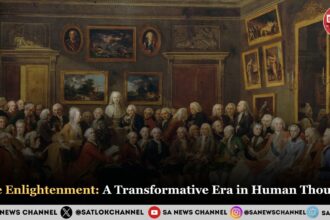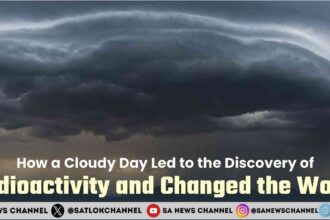The Cold War, a period of intense geopolitical tension between the United States and its allies on one side and the Soviet Union and its satellite states on the other, dominated international relations from the mid-1940s until the early 1990s. Unlike traditional wars, the Cold War was characterized by a lack of direct large-scale military conflict between the two superpowers. Instead, it was marked by ideological rivalry, espionage, proxy wars, and an arms race that brought the world to the brink of nuclear annihilation. This article explores the origins, key events, and eventual conclusion of the Cold War, as well as its lasting impact on global politics and society.
- Key events of Cold War
- Origins of the Cold War (1917–1945)
- The Early Cold War (1947–1953)
- The Nuclear Arms Race and the Space Race (1953–1962)
- The Cuban Missile Crisis and Détente (1962–1979)
- The Final Years of the Cold War (1980–1991)
- The impact of the Cold War on global politics and alliances
- The legacy and impact of the Cold War
- Sant Rampal Ji Maharaj’s Perspective on War and Peace in Light of Bhagavad Gita
- FAQs about the history of the Cold War
Key events of Cold War
- The Truman Doctrine:President Harry Truman’s policy to contain communism and support democracy in third world nations
- The Korean War:North Korea, backed by the Soviet Union and China, invaded South Korea in 1950
- The Cuban Missile Crisis: In 1962, the Soviet Union secretly installed missiles in Cuba, which brought the US and the Soviet Union close to nuclear war
- End of the Cold War:The Cold War ended with the decline and fall of the Soviet Union and the Eastern bloc in the late 1980s. Historians believe that the U.S. won the Cold War through proxy wars and the nuclear arms race.
- Defining features:The Cold War was defined by the threat of nuclear war, competition over newly independent nations, and the support of each other’s enemies around the world.
Origins of the Cold War (1917–1945)
The seeds of the Cold War were sown long before the end of World War II. The Bolshevik Revolution of 1917, which established the Soviet Union as the world’s first communist state, created an ideological divide between the USSR and the capitalist West. The United States and its allies viewed communism as a threat to democracy and free markets, while the Soviet Union saw capitalism as exploitative and imperialistic.
During World War II, the U.S. and the USSR were uneasy allies against Nazi Germany. However, their partnership was fraught with mistrust. The Western Allies delayed opening a second front in Europe, which Stalin believed was a deliberate attempt to weaken the Soviet Union. Meanwhile, the U.S. and Britain were alarmed by Stalin’s territorial ambitions in Eastern Europe.
The Yalta Conference (February 1945) and the Potsdam Conference (July–August 1945) highlighted these tensions. At Yalta, the Allies agreed to divide Germany into occupation zones and to allow free elections in Eastern Europe. However, Stalin’s subsequent actions, such as the establishment of communist governments in Poland and other Eastern European countries, violated these agreements. By 1946, former British Prime Minister Winston Churchill famously declared that an “Iron Curtain” had descended across Europe, dividing the communist East from the democratic West.
The Early Cold War (1947–1953)
The Cold War began in earnest in 1947 with the announcement of the Truman Doctrine. In response to communist insurgencies in Greece and Turkey, U.S. President Harry S. Truman pledged to support free peoples resisting subjugation by armed minorities or outside pressures. This policy of containment became the cornerstone of U.S. foreign policy for the next four decades.
The Marshall Plan (1948), a U.S.-funded initiative to rebuild war-torn Europe, further deepened the divide. While the plan was open to all European nations, the Soviet Union refused to participate and pressured its satellite states to do the same. Instead, the USSR established the Council for Mutual Economic Assistance (COMECON) to coordinate economic development among communist countries.
Also Read: History of World War 1: The War to End All Wars
The division of Germany became a focal point of Cold War tensions. In 1948, the Soviet Union blockaded West Berlin, cutting off all land access to the city. In response, the U.S. and its allies organized the Berlin Airlift, supplying West Berlin with food and fuel by air for nearly a year. The blockade was eventually lifted, but Germany remained divided into East and West, with Berlin itself split into four occupation zones.
The formation of NATO (North Atlantic Treaty Organization) in 1949 and the Warsaw Pact in 1955 solidified the military division of Europe. NATO, a defensive alliance of Western nations, was created to counter the perceived threat of Soviet expansion. The Warsaw Pact, a Soviet-led alliance of Eastern European states, was established in response.
The Korean War (1950–1953) marked the first major proxy conflict of the Cold War. When North Korean forces, backed by the Soviet Union and China, invaded South Korea, the United Nations, led by the U.S., intervened to repel the invasion. The war ended in a stalemate, with Korea remaining divided along the 38th parallel.
The Nuclear Arms Race and the Space Race (1953–1962)
The Cold War was also defined by the nuclear arms race. The U.S. had demonstrated its atomic capabilities by dropping bombs on Hiroshima and Nagasaki in 1945. In 1949, the Soviet Union tested its first atomic bomb, ending the U.S. monopoly on nuclear weapons. The development of hydrogen bombs by both superpowers in the 1950s further escalated the arms race.
The doctrine of Mutually Assured Destruction (MAD) emerged during this period. Both the U.S. and the USSR recognized that a nuclear war would result in catastrophic losses for both sides, which deterred direct conflict. However, this did not prevent both nations from stockpiling weapons and developing delivery systems such as intercontinental ballistic missiles (ICBMs).
The Space Race was another dimension of Cold War competition. The Soviet Union took an early lead with the launch of Sputnik, the first artificial satellite, in 1957. This achievement shocked the U.S. and spurred increased investment in science and technology. The U.S. eventually overtook the USSR with the Apollo 11 moon landing in 1969, a symbolic victory in the ideological struggle.
The Cuban Missile Crisis and Détente (1962–1979)
The Cuban Missile Crisis of 1962 was the closest the world came to nuclear war. After the U.S. discovered Soviet missile installations in Cuba, President John F. Kennedy imposed a naval blockade and demanded their removal. After a tense 13-day standoff, the crisis was resolved through backchannel negotiations. The Soviets agreed to remove the missiles in exchange for a U.S. pledge not to invade Cuba and the secret removal of U.S. missiles from Turkey.
The crisis led to a period of détente, or relaxation of tensions, in the 1970s. Both superpowers recognized the need to reduce the risk of nuclear war. The Strategic Arms Limitation Talks (SALT) resulted in agreements to limit the number of nuclear weapons, while the Anti-Ballistic Missile (ABM) Treaty restricted the development of missile defense systems.
However, détente was not without its challenges. The Soviet invasion of Afghanistan in 1979 marked the end of this period and reignited Cold War tensions. The U.S. responded by boycotting the 1980 Moscow Olympics and providing support to Afghan mujahideen fighters.
The Final Years of the Cold War (1980–1991)
The election of U.S. President Ronald Reagan in 1980 marked a shift toward a more confrontational approach. Reagan referred to the Soviet Union as an “evil empire” and embarked on a massive military buildup, including the Strategic Defense Initiative (SDI), a proposed missile defense system.
However, the Cold War began to wind down in the mid-1980s under the leadership of Soviet General Secretary Mikhail Gorbachev. His policies of glasnost (openness) and perestroika (restructuring) aimed to reform the Soviet system but inadvertently accelerated its decline. Gorbachev also pursued arms control agreements, such as the Intermediate-Range Nuclear Forces (INF) Treaty, which eliminated an entire class of nuclear weapons.
The fall of the Berlin Wall in 1989 symbolized the collapse of communist regimes in Eastern Europe. By 1991, the Soviet Union itself dissolved, marking the end of the Cold War.
The impact of the Cold War on global politics and alliances
The Cold War significantly impacted global politics and alliances, reshaping international relations and the balance of power. It led to the formation of two major military alliances: NATO, established by the United States and its Western allies in 1949, and the Warsaw Pact, formed by the Soviet Union and its Eastern European satellites in 1955. These alliances were primarily defensive, aimed at countering the perceived threat from the opposing bloc.
The Cold War also influenced the geopolitical landscape by creating a bipolar world divided between the U.S.-led Western bloc and the Soviet-led Eastern bloc. This division extended beyond Europe, affecting countries worldwide as they aligned with one of the superpowers or attempted to remain non-aligned. The rivalry fueled arms races, including nuclear proliferation, and led to numerous proxy wars in regions like Korea, Vietnam, and Afghanistan.
Over time, the rigid bipolar structure began to dissolve, particularly after the Sino-Soviet split and the economic rise of Western Europe and Japan, which allowed for more independent foreign policies. The Cold War’s end in the late 1980s and early 1990s, marked by the collapse of the Soviet Union and the dissolution of the Warsaw Pact, led to a reconfiguration of alliances and a shift towards more cooperative international relations.
The legacy and impact of the Cold War
The legacy and impact of the Cold War are profound and multifaceted, affecting global politics, military strategies, and international relations:
- Bipolar World Order: The Cold War established a bipolar world divided between the U.S.-led Western bloc and the Soviet-led Eastern bloc, influencing global alliances and conflicts.
- Nuclear Arms Race: It spurred a nuclear arms race, leading to the development and stockpiling of nuclear weapons by the U.S. and the Soviet Union, and later influencing nuclear proliferation in other countries.
- Military Alliances: The formation of NATO and the Warsaw Pact solidified military alliances that shaped defense strategies and geopolitical alignments.
- Decolonization and Nationalism: The Cold War era coincided with decolonization, as former colonies gained independence, often aligning with one of the superpowers or remaining non-aligned.
- Economic and Technological Competition: It drove technological advancements, particularly in military and space technologies, as both superpowers sought to demonstrate superiority.
- End of the Soviet Union: The Cold War’s conclusion saw the collapse of the Soviet Union, leading to the emergence of new independent states and a shift towards more democratic governance in Eastern Europe.
- Ongoing Nuclear Challenges: Despite the end of the Cold War, nuclear weapons remain a significant concern, with ongoing debates about disarmament and the risks of proliferation.
The Cold War actually left an indelible mark on global politics, economics, and culture. It shaped alliances, influenced technological advancements, and fueled countless conflicts. The ideological struggle between capitalism and communism defined the second half of the 20th century, and its legacy continues to influence international relations today. The Cold War serves as a reminder of the dangers of ideological extremism and the importance of diplomacy in preventing global conflict.
Sant Rampal Ji Maharaj’s Perspective on War and Peace in Light of Bhagavad Gita
The Chyren and Globally renowned Spiritual Leader Sant Rampal Ji Maharaj teaches that war and peace are direct consequences of human actions and beliefs. He emphasizes that true peace can only be achieved through spiritual knowledge and devotion to the Supreme God, Kabir Sahib. According to His teachings, wars arise due to ignorance, greed, and the absence of true spiritual wisdom, while peace is possible when humanity follows the right path of bhakti (devotion) as per the scriptures.
This aligns with the teachings of the Bhagavad Gita. In Bhagavad Gita 16:21:
|| Tri-vidhaṁ narakasyedaṁ dvāraṁ nāśhanam ātmanaḥ
kāmaḥ krodhas tathā lobhas tasmād etat trayaṁ tyajet ||
“Lust, anger, and greed are three gates to hell; one must abandon them.”
The Mahabharata itself was a result of these vices, leading to mass destruction. Sant Rampal Ji Maharaj explains that similar wars continue today because humanity is trapped in Maya (illusion) and lacks true spiritual knowledge (Tatvgyan).
However, the Gita also provides a path to peace. In Bhagavad Gita 18:62, Jyoti Niranjan (Kaal) instructs Arjuna to seek refuge in a higher Supreme God for ultimate peace:
|| Tam eva sharanam gachchha sarva-bhavena bharata
tat-prasadat param shantim sthanam prapsyasi shashvatam ||
“Surrender completely to Him (the Supreme God); by His grace, you will attain eternal peace and the supreme abode.”
Sant Rampal Ji reveals that this Supreme God is Kabir Sahib, and only by following His true path can individuals and nations end conflicts and establish permanent peace.
He preaches non-violence, unity, and universal brotherhood, urging people to abandon hatred, materialistic desires, and power struggles. His message is that real peace is not just the absence of war but the presence of spiritual enlightenment and righteousness. By adopting true devotion and following the teachings of a complete Guru, individuals and nations can overcome conflicts and live in harmony. He firmly believes that lasting peace is only possible when humanity recognizes and worships the one true God correctly.
Thus, the Bhagavad Gita and Sant Rampal Ji Maharaj’s teachings together highlight that war is fueled by ignorance and material desires, while true peace is achieved only through devotion to the Supreme God, Kabir Sahib.
FAQs about the history of the Cold War
1. What was the Cold War?
The Cold War (1945–1991) was a geopolitical and ideological conflict between the U.S. and its allies (capitalist bloc) and the Soviet Union and its allies (communist bloc). It was marked by nuclear tensions, proxy wars, espionage, and political rivalry without direct large-scale warfare.
2. What were the main causes of the Cold War?
The Cold War was fueled by ideological differences (capitalism vs. communism), mutual distrust, territorial disputes after World War II, the Soviet Union’s control over Eastern Europe, and the U.S. policy of containment to prevent the spread of communism.
3. What were some key events of the Cold War?
Major events include the Berlin Airlift (1948–49), the Korean War (1950–53), the Cuban Missile Crisis (1962), the Vietnam War (1955–75), the Space Race, and the fall of the Berlin Wall (1989), leading to the Soviet Union’s collapse in 1991.
4. How did the Cold War end?
The Cold War ended with the fall of communist regimes in Eastern Europe (1989), the reunification of Germany, and the dissolution of the Soviet Union in 1991, influenced by economic struggles, political reforms by Mikhail Gorbachev, and diplomatic efforts.
5. What is the legacy of the Cold War?
The Cold War shaped modern geopolitics, led to the expansion of NATO, advanced technological and space exploration, and left ongoing tensions between former rival nations. It also influenced conflicts and foreign policies that still affect global relations today.









